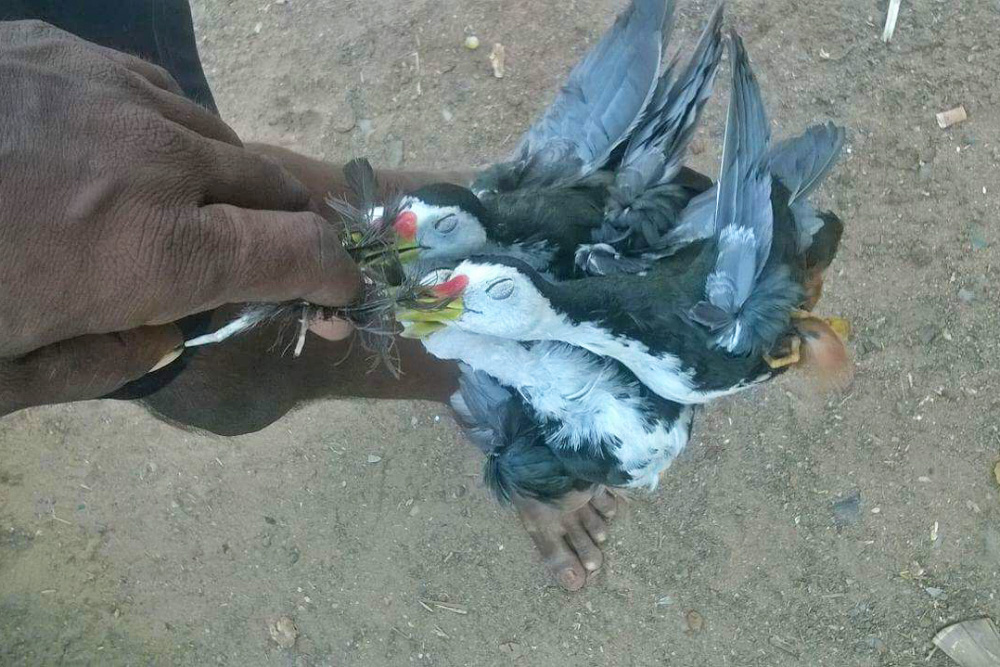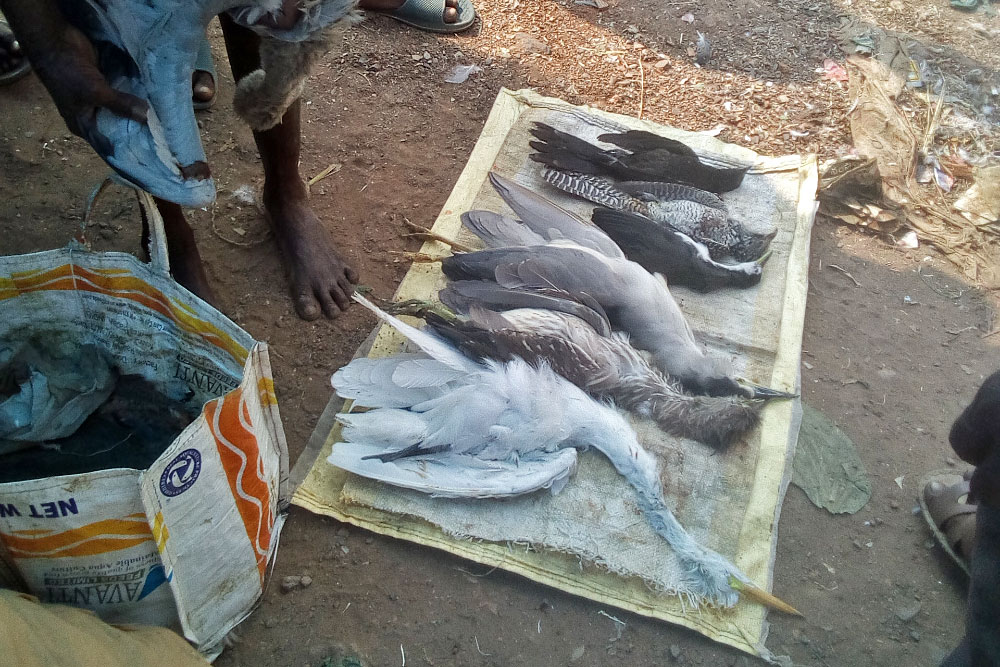The nine coastal districts of Andhra Pradesh are favourable habitats for resident and migratory water birds. Among these, a few sites have been recognized as Important Bird Areas (IBA) and potential Ramsar Sites. Every year, from October to May, different species of water birds, including threatened species, visit coastal and inland wetlands like mudflats, mangrove creeks, water ponds, agricultural fields and lagoons for food and shelter. These water birds play a key role in many wetland ecosystems in Andhra Pradesh. They also act as bio-indicators of ecological conditions. All are protected under the Wildlife (protection) Act, 1972.
We decided to survey the state of waterfowl in the east and west godavari districts. The study was conducted at multiple intervals during the last one year. I was assisted by Mr. D.D.D Sai Reddy, who volunteered to help me with the survey. Initially we started monitoring different locations in both West and East Godavari districts. As we progressed, we collected information about poaching activities. We could identify the water birds that were being poached and the locations they were being marketed, in both the Godavari districts.
During our preliminary survey and documentation, we found that the poaching of resident birds is a common phenomenon throughout the year and increases significantly during the migratory season with the arrival of migrants. The bird poachers constitute people living close to the wetlands, and poaching is their primary source of income.
Interestingly our case study revealed that, in some places in West Godavari district, the poachers are hired by a middle man. The poached birds are handed over to the middle man, who is an well-versed in selling the birds in the markets. It was quite evident that the bird hunters are killing these birds on a very large scale as this is their primary source of income.
Our study also found that the incidents of poaching are higher in the West Godavari district compared to the East Godavari district. Palakollu municipal market in West Godavari district is one such famous bird market. Weekly bird markets are held every Saturday, and the market starts from 2pm in the afternoon. Birds like Egrets, Storks, Water Hens, Common Mynas, and Francolins are among the highest sold birds.
In these markets, it is very common to see about 5 birds on a display while the rest are stored in a plastic bag. Once the displayed bird is sold it is replaced by another bird from the plastic bag. Most of these markets are within the fish markets or close to wine shops and bus stands.
Poachers utilize different techniques to kill different kinds of birds. Egrets, Storks and Herons are usually shot using a gun, while ducks are poisoned. For Water Hens and Waders, nets and cages are employed. The birds most in demand are Egrets, Rock Pigeons, and ducks such as Northern Pintails and Lesser Whistling ducks.
On the other hand, the children below 15 years of age were found hunting birds for fun and instant money. In some areas near the wetlands these children used slingshots and stones to kill the birds. Once the bird is injured it is captured and sold for about 10-20 rupees, or are used for their own consumption.
Later, During the secondary survey, we monitored all the identified sites and documented 1600 birds of 19 different species (dead and live) in the West and the East Godavari districts of Andhra Pradesh. All the documentation is secretly done with a mobile camera. Apart from the water birds I also documented poaching of terrestrial bird species like Asian koels.
This is the list of poached bird species from the markets documented during the study:
- White breasted water hen
- Water cock
- Rail
- Black crowned night heron
- Purple heron
- Open bill stork
- Asian koel
- Large egret
- Median egret
- Cattle egret
- Common sandpiper
- Black winged stilt
- Northern pintails
- Lesser whistling ducks
- Whiskered tern
- Rock pigeon
- Francolin
- Quails
- Pond heron
Bird Poaching can be curbed by creating awareness about the importance of these birds in the ecosystem. This knowledge must be conveyed to the local community that includes the bird hunters as well as the buyers of the bird meat. Strict action should be taken by the government against the middle men. Proper management of the wetlands and regular monitoring of these markets by the concerned authorities and NGOs are urgently required for conserving water birds.
Through a species conservation network, we are working hard to protect birds from the clutches of the poachers. This is being done through research and creating awareness, as well as by submitting reports to the Andhra Pradesh forest department.



 CI is a non-profit, non-commercial portal that aims to facilitate wildlife and nature conservation by providing reliable information and the tools needed to campaign effectively.
CI is a non-profit, non-commercial portal that aims to facilitate wildlife and nature conservation by providing reliable information and the tools needed to campaign effectively.